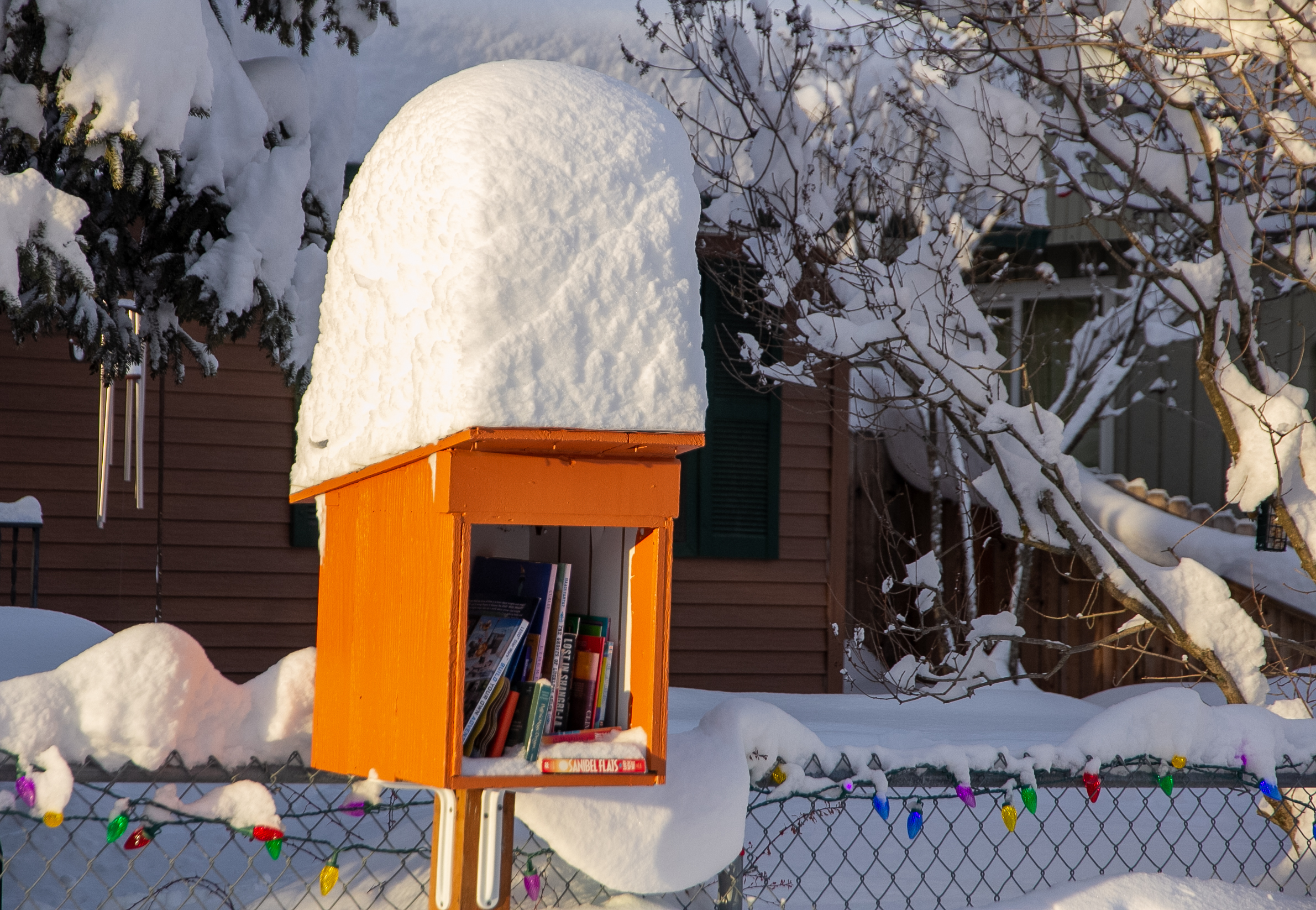
Anchorage and other parts of Southcentral are still digging out from — not one, but two — big snowstorms in a week. And there’s more on the way.
In that one-week period, the National Weather Service’s official measuring spot on the city’s west side got almost exactly 30 inches of snow, with more reported to the east and on the Anchorage Hillside. That’s about three-quarters of the way to the all-time record for the whole month of December.
And, of course, as National Weather Service climate researcher Brian Brettschneider warns us, that’s with two weeks left in December and more snow coming.
Back for our Ask a Climatologist segment, Brettschneider says there are a couple ways to think about the snow, including one measurement that gets at how it feels to shovel it out of driveways.
Listen:
[Sign up for Alaska Public Media’s daily newsletter to get our top stories delivered to your inbox.]
The following transcript has been lightly edited for clarity.
Brian Brettschneider: One, which is the way most people think of it is, you know, you stick a ruler in the ground and how many inches were measured. But an equally important measure is the liquid equivalent. So if you melt it, how much actual water was in it? So I’ll talk about both of those.
You know, in the history of Anchorage, if you look at how often did, say, a foot of snow fall, it’s a pretty uncommon event. Most winters have no events with 12-inch snowfalls. And then to get two in a week is pretty uncommon. Not unheard of. Back in late December 2006 and early January 2007, we had two different 12-inch snowfalls in about a weeklong period, as well. The difference with those is they were very fluffy snows.
In these (December 2022) storms, it was a very wet snow — or not, it wasn’t wet, it was what we call high-density snow. So it only takes about 10 inches of that snow to melt down to about an inch of water. Usually our fluffy snows are, you know, it takes 15 or even 20 inches of snow, if you melt it, to get an inch of water. The second event was, for a calendar day, we had 1.12 inches of melted snow, which was the second wettest December day on record in Anchorage. So it’s a lot harder, you notice that when you’re shoveling, too. It’s a lot easier to push around that fluffy snow than it is that heavier snow.
Casey Grove: You can at least feel the difference, right? When you’re shoveling?
BB: Absolutely. You can hurt your back, that high-density sandlike snow.
CG: What is the probability that we would get two big snowstorms like that, pretty much back to back? Or, you know, I guess another way of asking that is what is the likelihood, or how often could Anchorage residents expect two big snowstorms like that back to back?
BB: Well, if you treat them as independent events, and I’ll talk about that in a moment, each one of them has a recurrence interval of 30 or more years. And in fact, the liquid equivalent precipitation of the second storm, the, over two days, over an inch and a half, statistically has a much greater than 50-year recurrence interval. Now, we really can’t treat them as independent events, because our overall atmospheric pattern favors these storms forming. It favors kind of a succession of storms. And we’ve seen this in the past, two 12-inch snowfalls in a week. We’ve had other cases where, you know, you get five, six inches a day for, we’ve even had that for like five days in a row before. And so the pattern currently that we’re in favors storminess. And so the fact that we had two storms, you know, in a week is not noteworthy. The fact that they were each super big is is noteworthy. So, you know, to have 30 inches in a week, I don’t know how many times that’s happened before, but not more than two or three times. And Anchorage International Airport has a 72-year period of record. And so you kind of do the math on, well, has it happened 1, 2, 3, 4 times? You know what the recurrence interval is.
CG: Gotcha. Yeah. So, a handful. Or less than a handful, maybe, of times. So now I want to ask you about maybe more over the long term. It’s pretty well documented that the climate is warming, and do we expect there to be more of these big snowfalls or more snow in general years in the future?
BB: Well, there’s a couple of parts to that answer. And one is in a warming world — so warmer air can can hold more moisture. And that’s, that’s, you know, basic chemistry, thermodynamics. And if you have air that’s holding more moisture, and you squeeze that moisture out, you’re gonna get more precipitation, and so long as the temperature is at or below freezing, that could mean more snowfall. And so if you look at the numbers, what we found here in Anchorage is in the core winter months — December, January, February — we’re actually getting more snow, and that’s borne out over several decades worth of data.
And that works out as long as you’re still below freezing, but then it stops working out when you get above freezing. So if you ask the people in Juneau, are they expecting more snowfall? The answer is no, because their snow pretty much already happens when it’s right at the freezing line. And so now you warm things up, 3, 4 or 5 degrees, and you’re going to transition a lot of that snow to rain. Over short time intervals here in Alaska, we can warm up and get more snow in the heart of the cold season. But that only lasts for so long. And we lose out on the shoulder seasons. So we’re seeing in Alaska much less October snow. October used to be the snowiest month of the year in much of Alaska, northern half of Alaska, and now it’s the snowiest month of the year almost nowhere.
Casey Grove is host of Alaska News Nightly, a general assignment reporter and an editor at Alaska Public Media. Reach him atcgrove@alaskapublic.org. Read more about Caseyhere.





